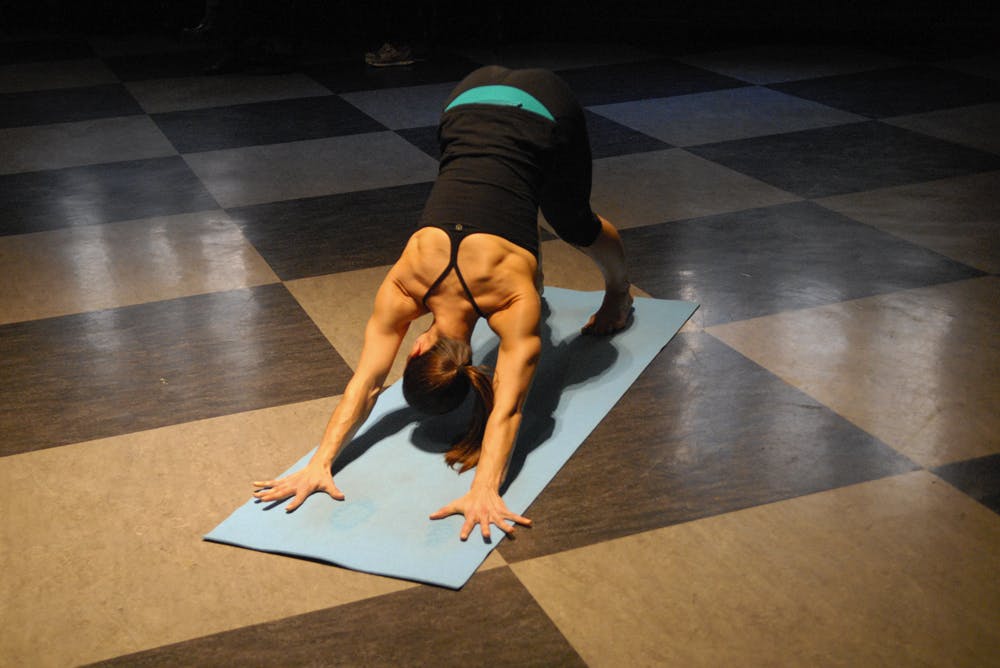Picture this: a bright purple yoga mat unrolled out amidst a sea of others. The one beside is an aquamarine. The one in front is a fire engine red. On the mats are the “yogis,” so they’re called, perfecting their downward dogs and child’s poses. But surrounding them is a van Gogh, a Matisse, a Picasso. It’s a weird image, but it’s one that’s becoming more and more popular. Okay, maybe not this exact image. While other food and fitness trends have grown in popularity with society's increasing emphasis on health and mindfulness, one unlikely trend too has surfaced: doing yoga and meditating in art museums.
The trend is evident in Philly. Every Wednesday evening during the pay–what–you–wish hours, the Philadelphia Museum of Art (PMA) hosts free yoga classes in the galleries at 6:00 pm and 7:00 pm. The classes are held in the Wallace Gallery, which houses some of the more prominent pieces of the museum’s medieval Western religious art collection. Similarly, both the Penn Museum and the Arthur Ross Art Gallery in Fisher Fine Arts Library (next one’s April 13, 12 pm) offer courses of either yoga or meditation.
The rise of these kinds of classes is not surprising given the popularity of health–themed marketing and business campaigns in the last few years. What is surprising though, is that art museums are among the locations being used. Art museums are not usually associated with relaxation. In fact, the watchful security guards and boundary lines give galleries a tone of restriction—far from the free and unwinding stretches of yoga. Yet, upon consideration of the pairing a little more deeply, there is seemingly an element of tranquility in both studying a painting and channeling mindfulness through physical flow.
The PMA in particular seems to target this correlation by choosing to hold the practice in a gallery whose walls are covered in religious icons. With the orange sunset light cast over a thirteenth century crucifix, the calming undertones of yoga are only amplified. Being surrounded by walls of artistic masterpieces necessitates the same sort of focus needed to mentally dive into a piece of art or hold the ever–difficult crow pose.
Another benefit of doing yoga or meditation in art museums is the openness of the environment. Often, studios for these practices suffer from low ceilings and smaller square footage, a side effect of their usually an exorbitant rent. But museums don’t have this issue. Those who design galleries purposely try to open up the space in order to encourage flow and allow room for the pieces to be seen from multiple angles. Instead of only seeing other patrons lying five inches away on either side, all bathed in their own sweat, the “yogi” sees the high ceilings and art–covered walls as a open space to match the opened mind.
Even though art museums weren’t constructed with the purpose of hosting exercise classes, it’s easy to see how a spacious art gallery can be conducive to the concentration and movement required of low–intensity activities like yoga. However, it may be that this idea might only work for certain styles of art. While it works for the religious art shown in that one gallery at the PMA, one of the adjacent ones has similar, but much more violent art that perhaps would not do well in promoting peaceful meditation. Along the same lines, a piece of Pollock or Twombly may be better suited for this than something from Jasper Johns or Joseph Beuys.
In the end, there’s no denying that both meditation and the study of art require a higher level of focus. But it’s important to remember that yoga in an art museum has a different intention behind it than yoga in a workout studio. The emphasis is not on burning calories, but on taking the time to prioritize mental awareness, and using the artistic environment to help. And even better, it’s usually free around Philly.

